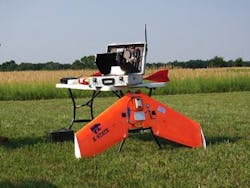This past March, I wrote about the case of Raphael Pirker, a 29-year-old who used an unmanned aerial vehicle (UAV) to film a commercial at the University of Virginia. In this case, the Federal Aviation Administration (FAA) filed a case against Pirker for flying a drone commercially. However, once the case went to court, a US Transportation Safety Board (NTSB) administrative law judge ruled that there is no official legally-binding rule against the commercial use of UAVs, and that the FAA has never officially regulated model aircraft and that its entire basis for making them illegal, a 2007 policy notice, was not legally binding.
The judge dismissed the case, noting that the FAA never underwent the required public notices necessary to make it an official law. Shortly thereafter, the FAA appealed the decision of the judge to the full NTSB Safety Board because it could "impact the safe operation of the national airspace system and the safety of people and property on the ground."
Fast forward months later, and the FAA wins their appeal, with the NTSB overturningthe March decision in FAA v. Pirker hat vacated a $10,000 fine. This decision now gives the FAA the authority to fine operators of UAVs for flying recklessly or carelessly.
"Safety is an important consideration in the integration of UAS into the National Airspace System,” according to a statement released by the Association for Unmanned Vehicle Systems International on the ruling. “However, the ruling still leaves unanswered important questions about whether the FAA can prohibit commercial operations in the absence of UAS rules. The FAA needs to immediately move forward with its small UAS rulemaking to provide clarity for all users of the technology."
Before the fine can be reinstated, the case will go under further review to determine if Pirker was actually flying the UAV recklessly, which, according to the FAA, was the case. The FAA said in a statement on its website that the agency “looks forward to a factual determination by the Administrative Law Judge on the 'careless or reckless' nature of the operation in question."
Pirker reportedly flew his UAV between 10 and 1,500 feet in the air in unsafe conditions around pedestrians and near an active heliport, according to an AUVSI release.
Most people would likely agree that UAVs require some sort of regulation when it comes to the safety risks that the vehicles impose on the public, but will a ruling like this give the FAA even more of a reason to clamp down on commercial UAVs in the future? So far, the agency has only granted commercial use for two specific applications:
Pictured: Pirker flew a Ritewing Zephyr aircraft similar to this model, owned by Kansas State University, AUVSI photo.
About the Author

James Carroll
Former VSD Editor James Carroll joined the team 2013. Carroll covered machine vision and imaging from numerous angles, including application stories, industry news, market updates, and new products. In addition to writing and editing articles, Carroll managed the Innovators Awards program and webcasts.
